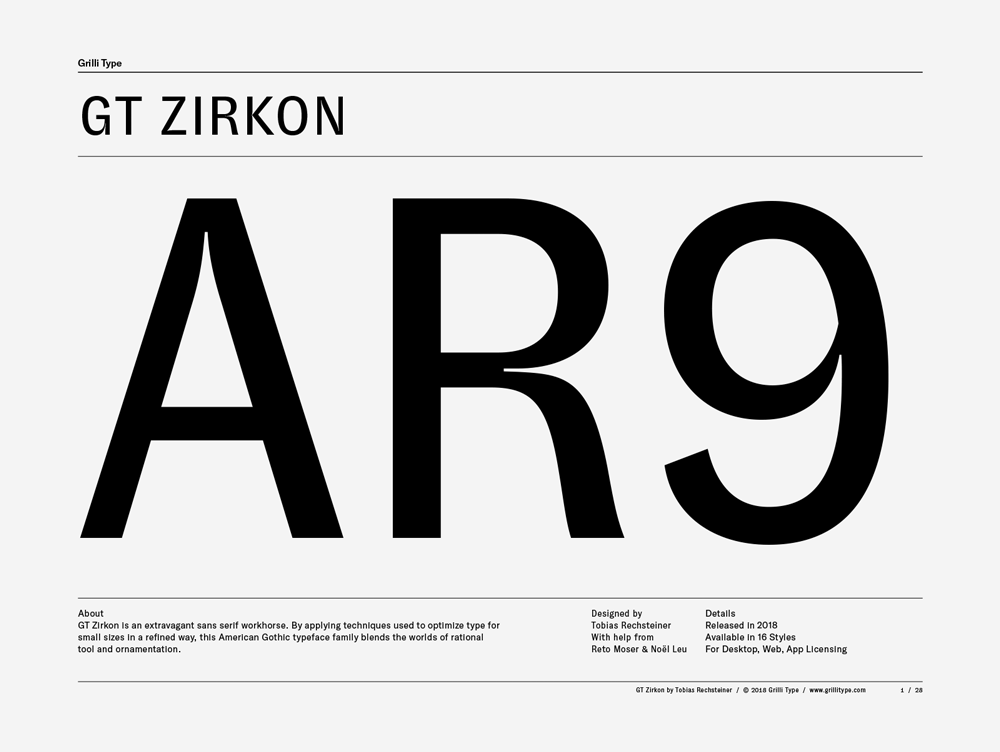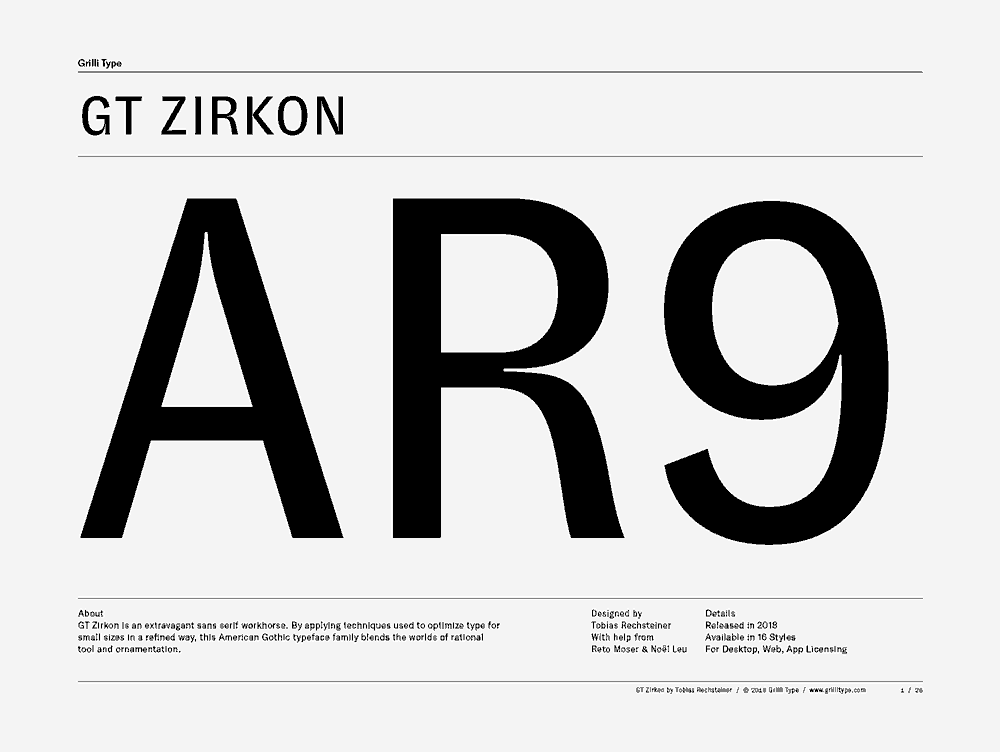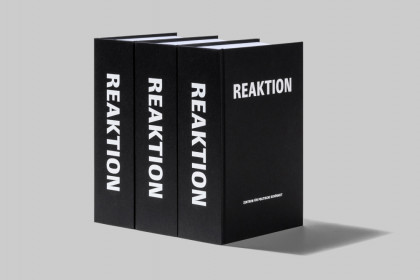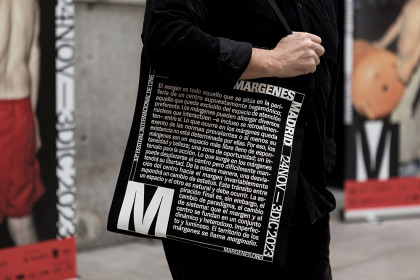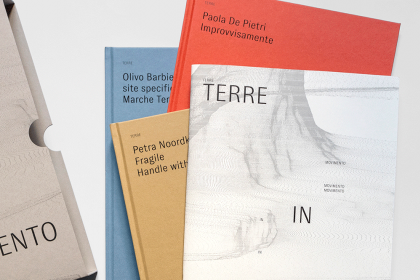GT Zirkon
Family overview
- Ultra Light Italic
- Thin Italic
- Light Italic
- Book Italic
- Regular Italic
- Medium Italic
- Bold Italic
- Black Italic
- Ultra LightThe dark brown to black color observed in most Zircon crystals is caused from iron oxide impurities.
- Ultra Light ItalicMinerals are distinguished by various chemical and physical properties. Differences in chemical composition and crystal structure distinguish the various species, which were determined by the mineral’s geological environment when formed.
- ThinZirconium is a mineral belonging to the group of nesosilicates.
- Thin ItalicRadioactive dating shows that the zircon crystals were formed more than 4 billion years ago.
- LightIn crystal growth, combinations of light intensity, light color, electric current, sound, the direction of these, plus the shape and size (frequency pattern) of the container or room, will all affect the final characteristics and energy potentials of a desired stone.
- Light ItalicRecent experiments, for example, have shown that crystals grow five times faster when their supersaturated solution is subjected to frequencies of 10 to 100 cycles a second.
- BookSilicon and oxygen constitute approximately 75% of the Earth’s crust, which translates directly into the predominance of silicate minerals.
- Book ItalicYellow, orange and red zircon is also known as “hyacinth”, from the flower hyacinthus, whose name is of Ancient Greek origin.
- RegularZircon is mainly consumed as an opacifier, and has been known to be used in the decorative ceramics industry.
- Regular ItalicConnected to internal radiation damage, these processes partially disrupt the crystal structure and partly explain the highly variable properties of zircon.
- MediumZircon is mainly consumed as an opacifier, and has been known to be used in the decorative ceramics industry.
- Medium ItalicYellow, orange and red zircon is also known as “hyacinth”, from the flower hyacinthus, whose name is of Ancient Greek origin.
- BoldRecent experiments, for example, have shown that crystals grow five times faster when their supersaturated solution is subjected to frequencies of 10 to 100 cycles a second.
- Bold ItalicCursed gems are the exception to the rule, however, for in most respects, gems and crystals are generally looked upon favorably, having properties for good luck, for healing, and in aiding in psychic abilities.
- BlackAustralia leads the world in zircon mining, producing 37% of the world total and accounting for 40% of world EDR for the mineral.
- Black ItalicThe abundance and diversity of minerals is controlled directly by their chemistry, in turn dependent on elemental abundances in the Earth.
- Settings
Typeface information
GT Zirkon is an extravagant sans serif workhorse. It blends the worlds of rational tool and ornamentation by applying techniques used to optimize type for small sizes in a refined way.
Typeface features
OpenType features enable smart typography. You can use these features in most Desktop applications, on the web, and in your mobile apps. Each typeface contains different features. Below are the most important features included in GT Zirkon’s fonts:
- SS01
- Alternate Arrows
Volume ↗
- SS02
- Alternate f
Refraction
- ONUM
- Oldstyle Figures
0123456789
- SMCP
- Small Caps
Ore Deposit
Typeface Minisite
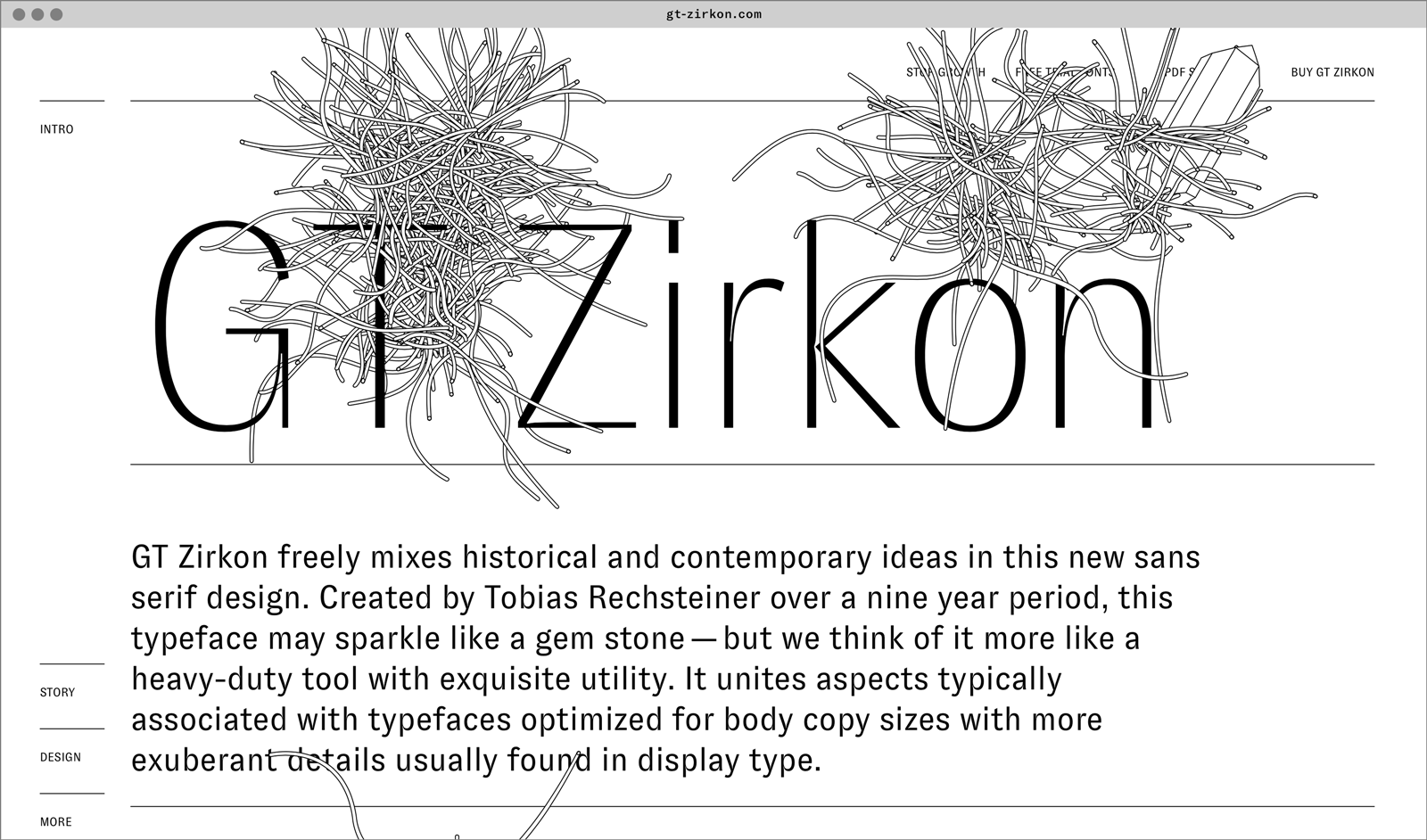
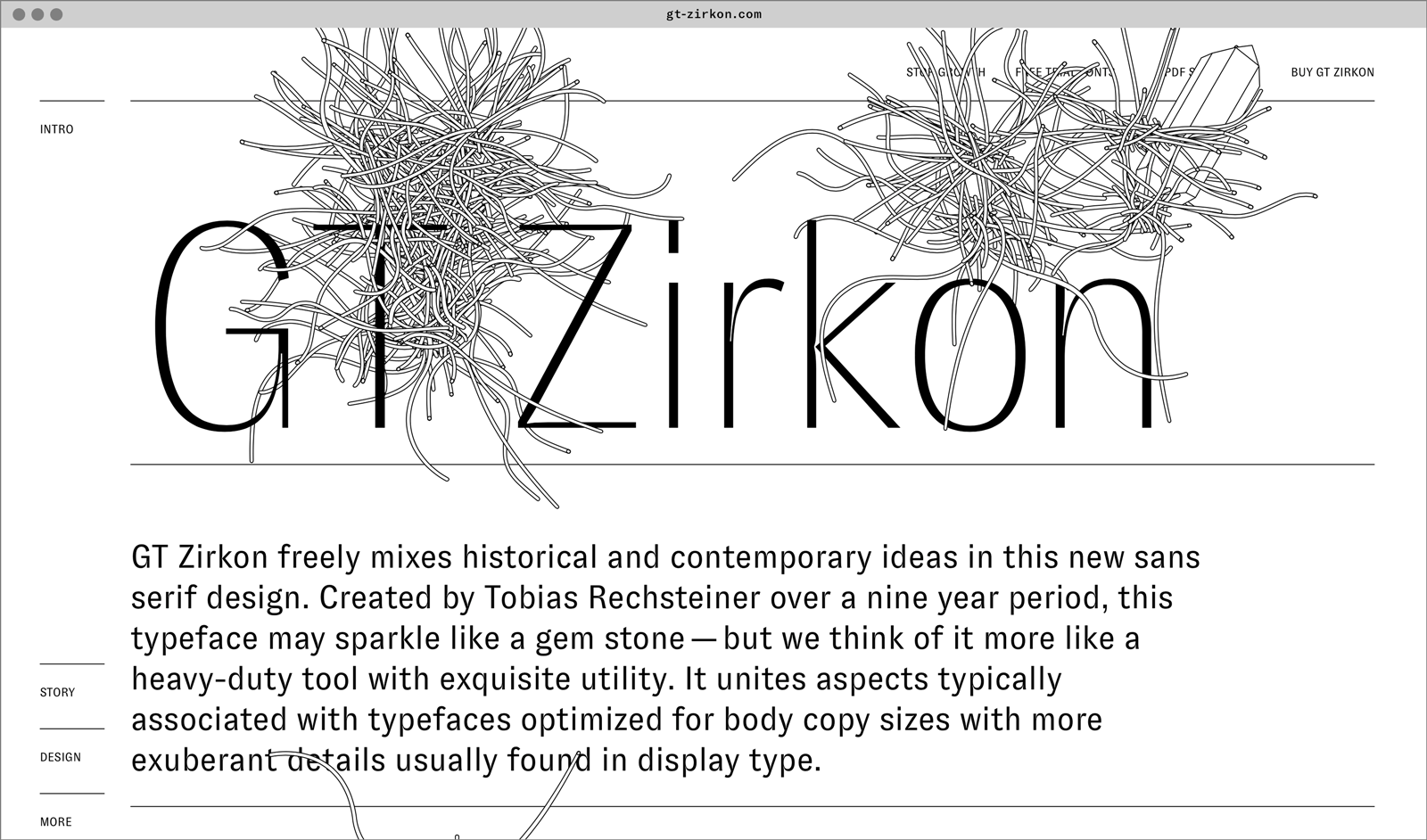
- Visit the GT Zirkon minisite to discover more about the typeface family’s history and design concept.
GT Zirkon in use
